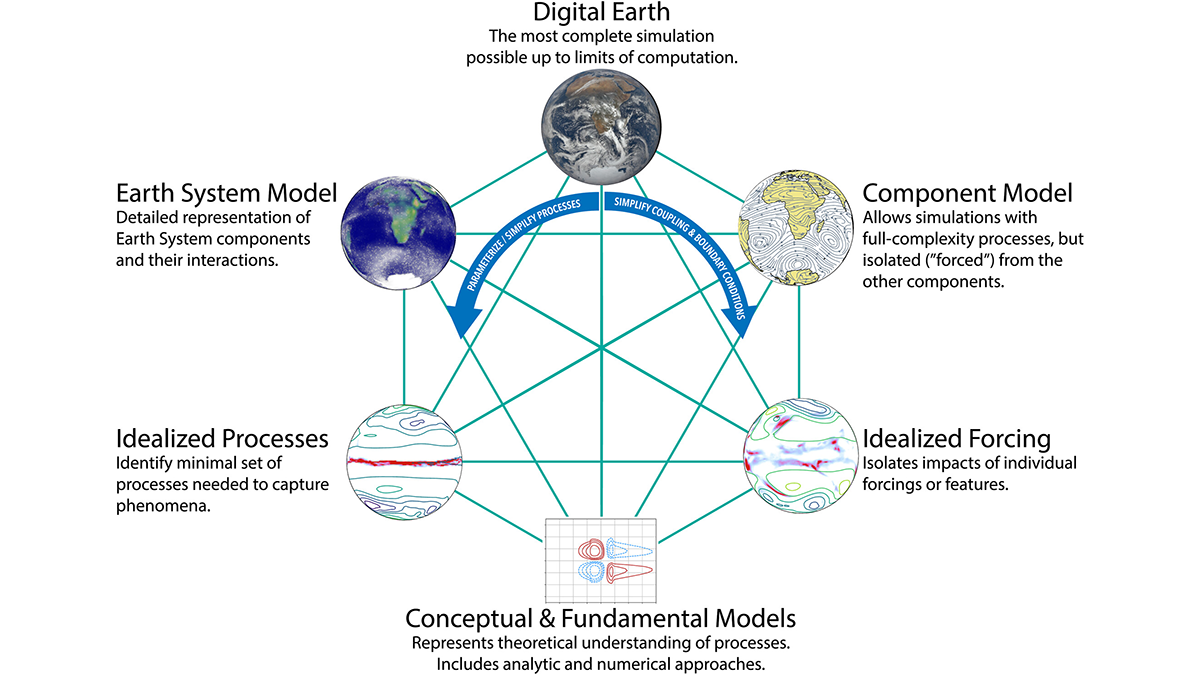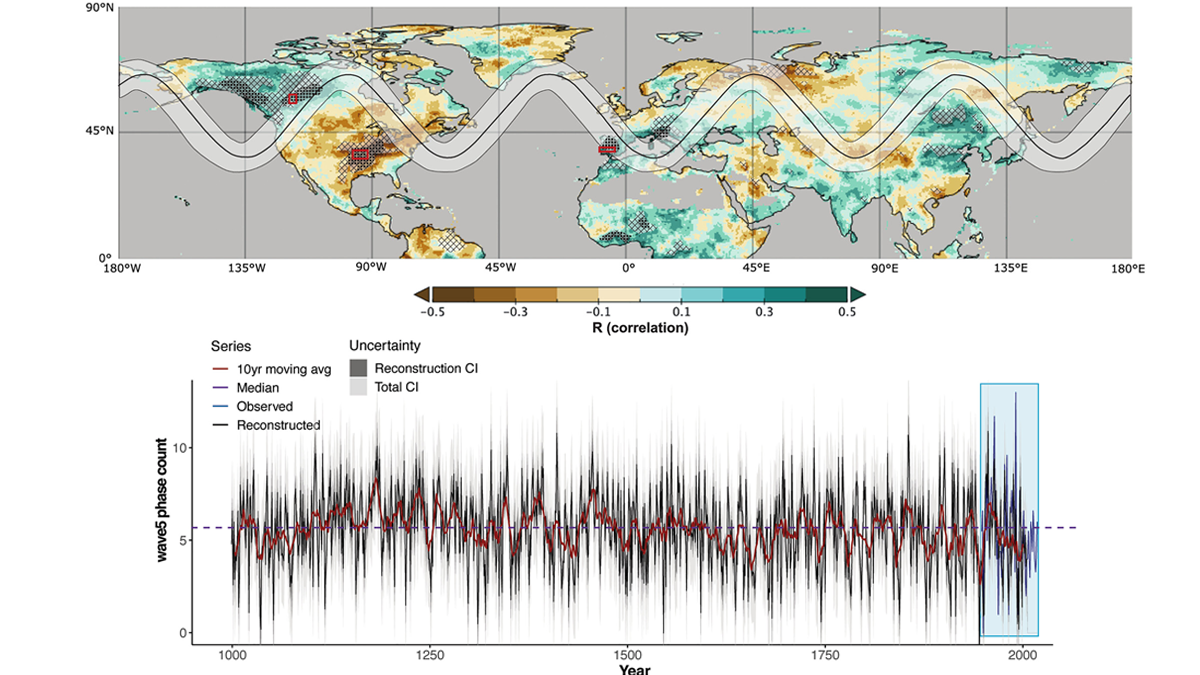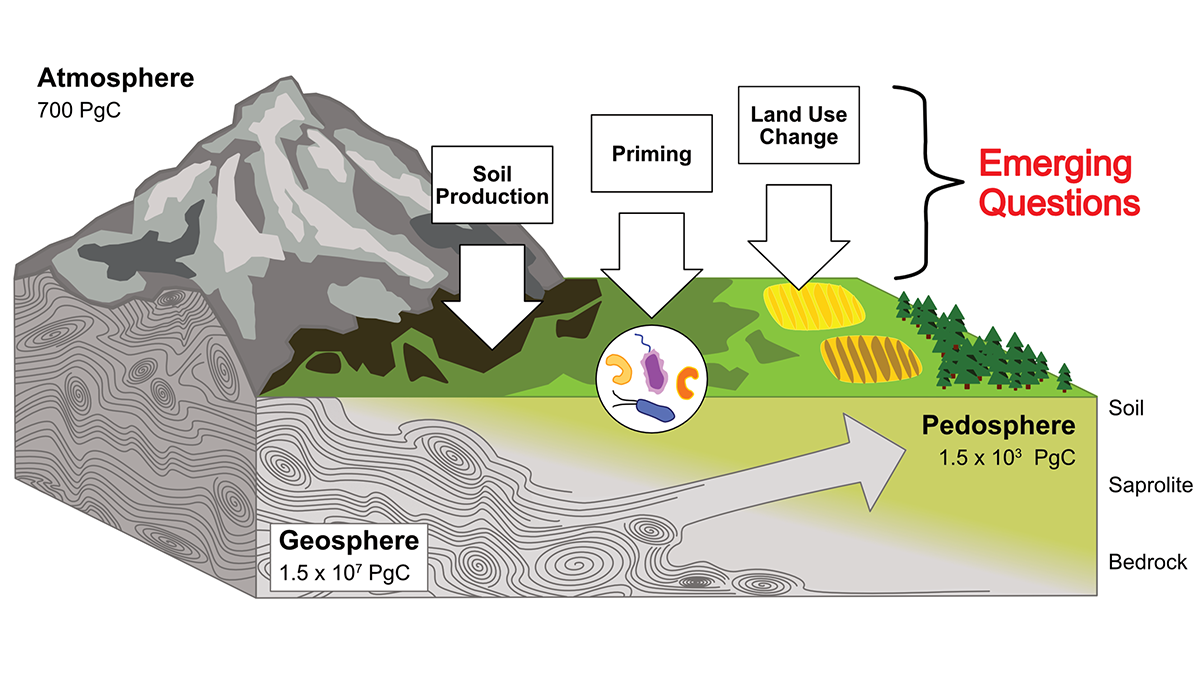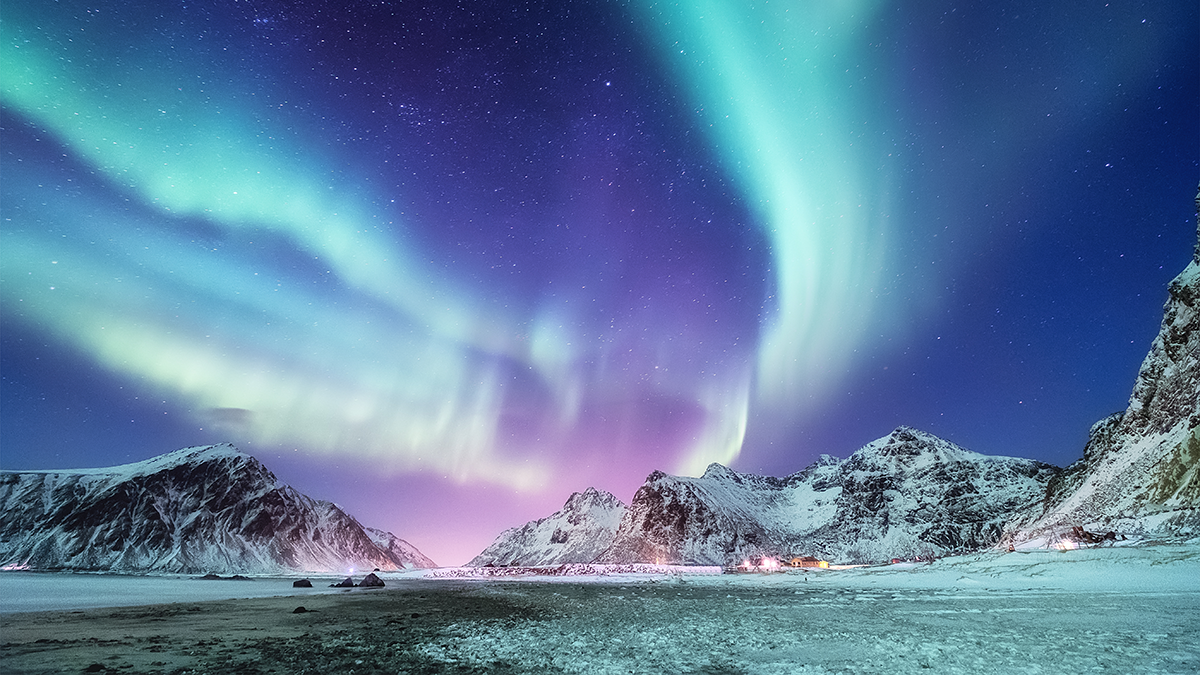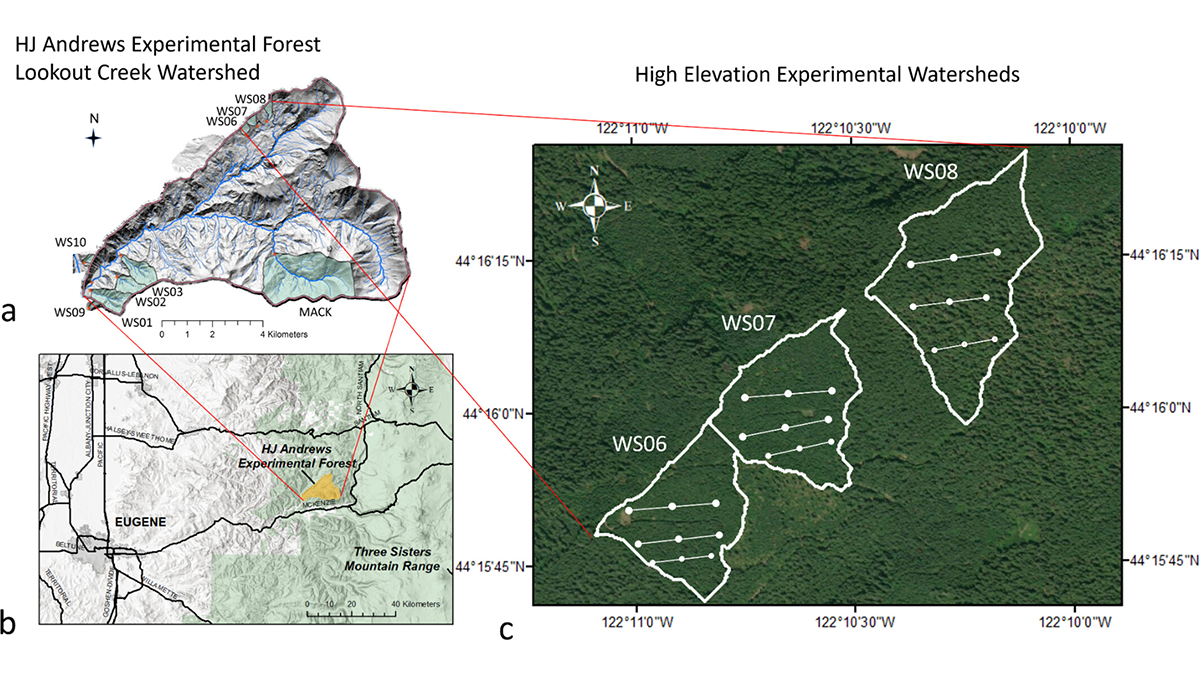As models that simulate Earth’s climate system become increasingly complex, the use of simpler and more flexible idealized models remains important for science and education.
Susan Trumbore
Tree Rings Record History of Jet Stream-Related Climate Extremes
Persistent spatial patterns of summer weather extremes in the northern hemisphere recorded in tree ring growth records provide a thousand-year history of jet stream ‘wave5’ dynamics.
Rock Organic Carbon in Soils: Recycled or Just Passing Through
It’s often assumed that all soil organic carbon ultimately derives from recent vegetation, but researchers argue that carbon inherited from parent rocks can be important and deserves more focus.
Using Satellite Data for More Effective Disaster Response
Satellite data play a crucial role in disaster assessment and response. Meeting expanding demand requires not only accelerated data processing but increased collaboration with responders.
Editorial Handover at AGU Advances
The outgoing and incoming Editors-in-Chief of AGU Advances reflect on recent years of growth and expansion in the journal while they plan for the challenges ahead.
Characterizing the Space Between Clouds and Clear Sky
The area near clouds is often classified as ‘clear sky’, but a new study demonstrates the potential biases of misclassifying these transition zones and their significance for Earth’s energy budget.
How Southern Ocean Currents Modulate Global Biogeochemical Cycles
Swirling currents called mesoscale eddies occupy about 22% of the ice-free Southern Ocean. Using data from drifting floats and satellites, scientists report the impact these eddies have on biogeochemical cycles.
Clumped CO Isotopes – New Tracers for Atmospheric Chemistry
A new study reports the first measurements of 13C18O in atmospheric carbon monoxide (CO) and show their variations reflect chemical ‘aging’ consistent with predicted kinetic isotope effects.
The Delicate Balance of Permafrost in Arctic River Floodplains
To evaluate the vulnerability of permafrost in Arctic floodplain landscapes to warming, scientists explore dynamics of its loss and reformation.
Understanding Carbon-Water Tradeoffs in Pacific Northwest Forests
A new study documents how spruce forests differing in management and age structure influence individual tree growth, carbon stocks, and landscape-water balance in the Pacific Northwest.

